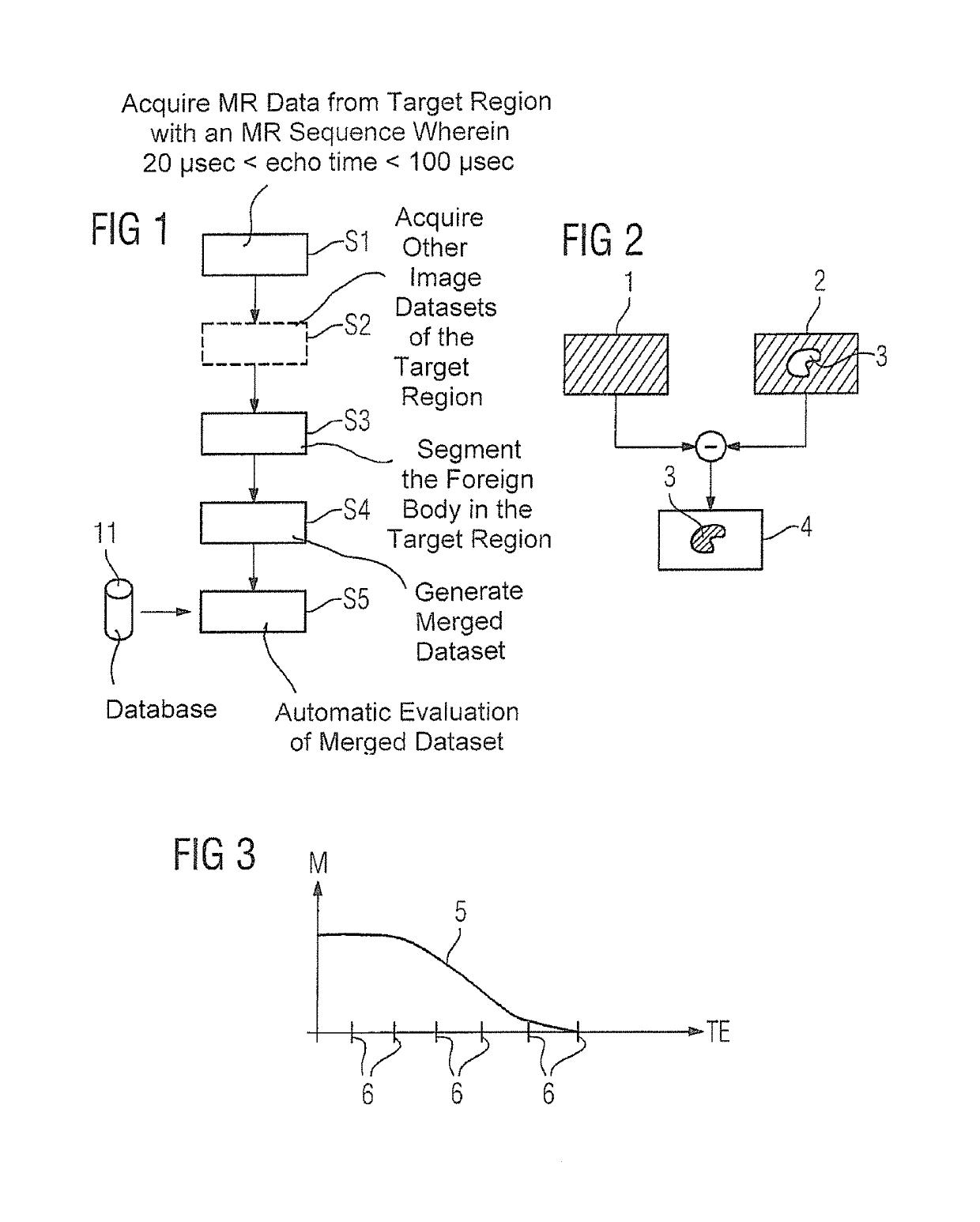Method and apparatus for recording a magnetic resonance dataset of at least one foreign body in a patient
a technology of magnetic resonance dataset and foreign body, which is applied in the field of method and apparatus for recording a magnetic resonance dataset of at least one foreign body in a patient, can solve the problems of loss of structural integrity and/or functionality of the foreign body, failure of cemented implants, and failure of polymeric fastenings, glues and cements, etc., to achieve fast signal decay, simplify segmentation, and facilitate segmentation
- Summary
- Abstract
- Description
- Claims
- Application Information
AI Technical Summary
Benefits of technology
Problems solved by technology
Method used
Image
Examples
Embodiment Construction
[0034]FIG. 1 IS a flowchart of an exemplary embodiment of the inventive method which is for recording and evaluating magnetic resonance data of a foreign body in a target region of a patient, in the specific example of an implant. Here, not only is magnetic resonance data of the implant itself, for example of a replacement joint, to be recorded, but also an automatic evaluation carried out with regard to the functionality and structural integrity of the implant and influence on its surroundings. Of course, this description also applies to other foreign bodies, for example cements, fastenings, glues, screws, and other medical devices.
[0035]In a step S1 the magnetic resonance data are recorded with a magnetic resonance scanner, a target region of the patient containing the implant being selected as the coverage area. A magnetic resonance sequence is used which permits ultra-short echo times, here in the range from 20 μs to 100 μs, i.e. the first measurement of magnetic resonance data ...
PUM
 Login to View More
Login to View More Abstract
Description
Claims
Application Information
 Login to View More
Login to View More - R&D
- Intellectual Property
- Life Sciences
- Materials
- Tech Scout
- Unparalleled Data Quality
- Higher Quality Content
- 60% Fewer Hallucinations
Browse by: Latest US Patents, China's latest patents, Technical Efficacy Thesaurus, Application Domain, Technology Topic, Popular Technical Reports.
© 2025 PatSnap. All rights reserved.Legal|Privacy policy|Modern Slavery Act Transparency Statement|Sitemap|About US| Contact US: help@patsnap.com


